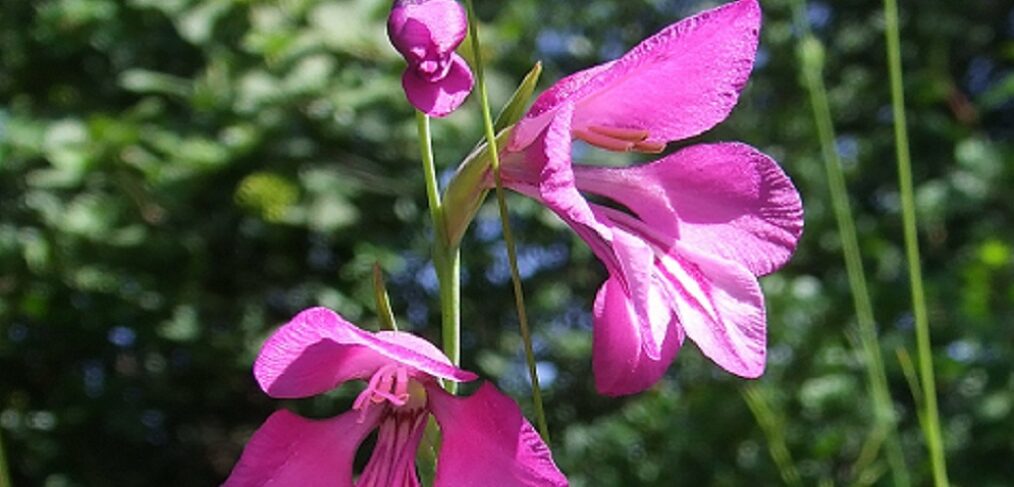
species of the week #53 – marsh gladiolus
The marsh gladiolus gets its unusual german name “Siegwurz”- translateabel as “victory root” from the chainmail-like sheath of thick bevels that protects the plant tuber. It is said to make its owner invulnerable in battle – like Siegfried from the Saga of the Nibelungs.
| Distributionstatus | Threatened with extinction |
| Remaining deposits | in the Speyerer Wald FFH site, Bavarian Alpine foothills, individual occurrences in Baden-Württemberg |
| Last sighting in Rhineland-palatinate | current |
| Habitat | Moors, bogs and swamp forests as well as alternately dry rough pastures and gravel heaths |
| Threat | Drought, scrub encroachment, early mowing, land use, eutrophication |
The marsh gladiolus is a strikingly attractive plant from the iris family. Two to five purple funnel-shaped flowers form loose inflorescences whose flowers all point in the same direction. The plant grows 25-60 cm high. In Germany, the species flowers from the end of May to July. It is pollinated by bumblebees and the seeds are mainly dispersed by the wind. However, the dispersal distance seems to be small.
The stands of marsh gladiolus depend on changing moisture conditions and the respective use. Changes in the water balance such as persistent waterlogging or a drop in the water table with soil dryness, nutrient enrichment, intensive grazing or the conversion of grassland into arable land endanger its survival. The species, which is weak in competition, also reacts sensitively to the overgrowth of areas and to mowing too early. Further potential causes of endangerment are the loss of land through afforestation or building over.
Wherever possible, extensive meadow and litter use should be maintained in the habitats of the marsh sedge. This promotes stable populations. Depending on the location, annual to biennial winter mowing or mowing at intervals of several years is recommended, if necessary in combination with de-bushing measures. Generous buffer zones to agriculturally used areas and heavily frequented traffic routes can help to reduce nutrient inputs into the areas.
Many former sites in Rhineland-Palatinate have become extinct. Currently, there is only one evidence of growth in the Speyer Forest FFH area.
Politically necessary:
– Limiting climate change
– Reduction of nutrient input into protected areas
– Comprehensive management of biotope areas
Image: By Albert H. – Own work, CC BY-SA 3.0, https://commons.wikimedia.org/w/index.php?curid=1033015
